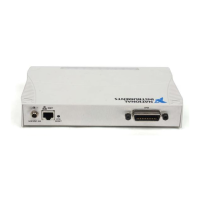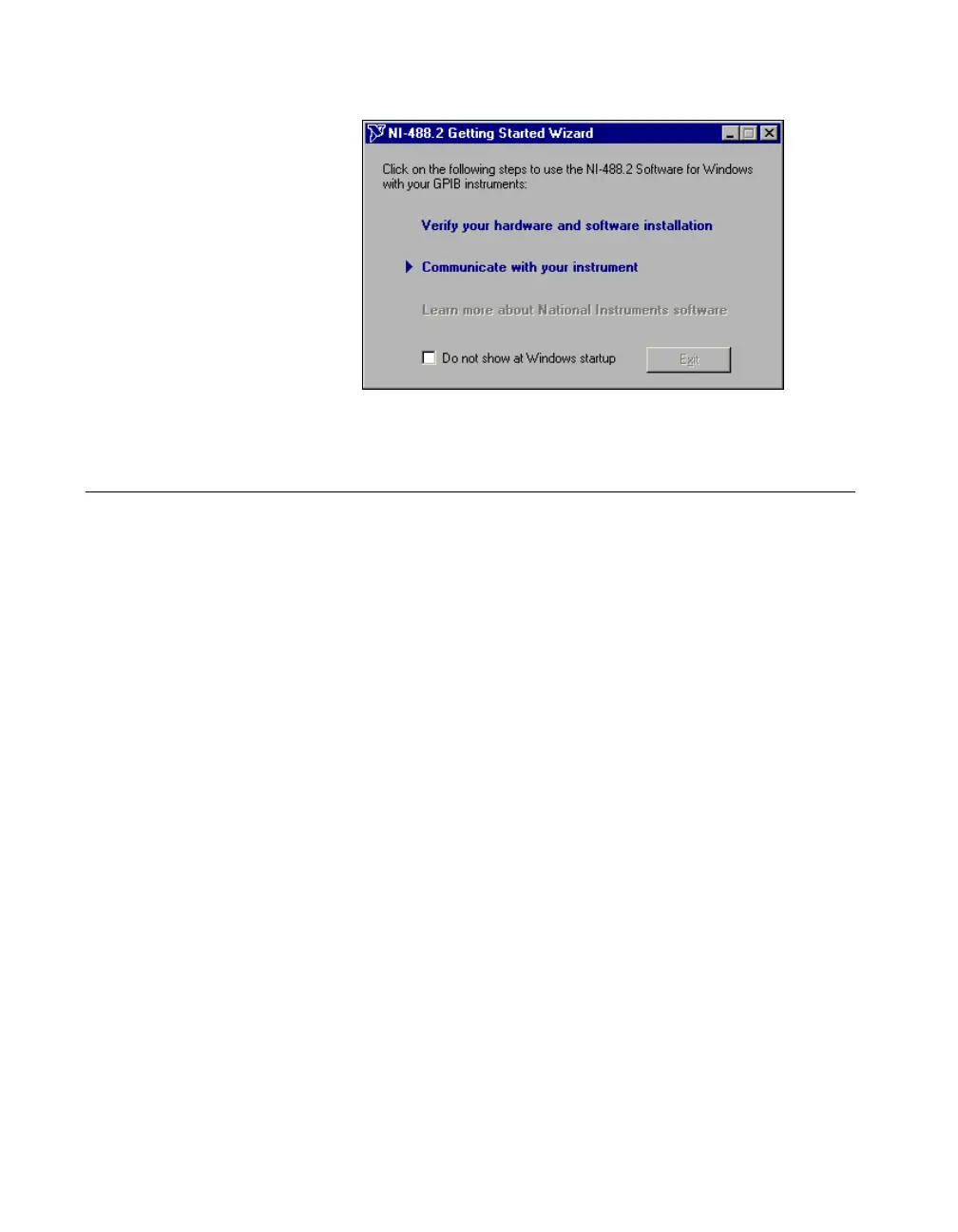Chapter 6 Using Your GPIB-ENET/100 and NI-488.2
GPIB-ENET/100 for Windows Me/98/95 6-2 ni.com
Figure 6-1. Communicating with Your Instrument
Using DHCP
The Dynamic Host Configuration Protocol (DHCP) is designed for large
networks in which networking devices are transient and network
parameters cannot be statically assigned and thus tied to specific devices.
DHCP eases the addition of networking devices onto a network by having
a server assign necessary network parameters, including the IP address,
the netmask, and router information, to a newly attached network device.
Optionally, if the device provides a hostname with the configuration
request, DHCP may attempt to configure your network to recognize the
device with the requested hostname.
DHCP requires a Domain Name Server (DNS) to associate the numerical
IP address assigned with the requested hostname. Within the past few years,
an Internet community standard has emerged to provide a standardized way
for these services to provide dynamic domain name services. Using this
standard, after DHCP assigns the numerical IP address, it can communicate
with DNS to register the newly assigned IP address with the requested
hostname. However, the complexity of DHCP and dynamic name
registration typically requires active management by a corporate MIS
department, or equivalent, because of several risks for failure.
One possible failure can occur if the pool of available addresses contains
no more unassigned IP addresses. This problem is evident if DHCP fails
to work and the PWR/RDY LED continues to flicker for longer than
90 seconds at power on. In this situation, you will need to obtain a static IP
address from your network administrator and configure the device yourself
using the NI Ethernet Device Configuration utility. Refer to the Choosing
a Static IP Address section in Chapter 3, Ethernet Configuration, for more

